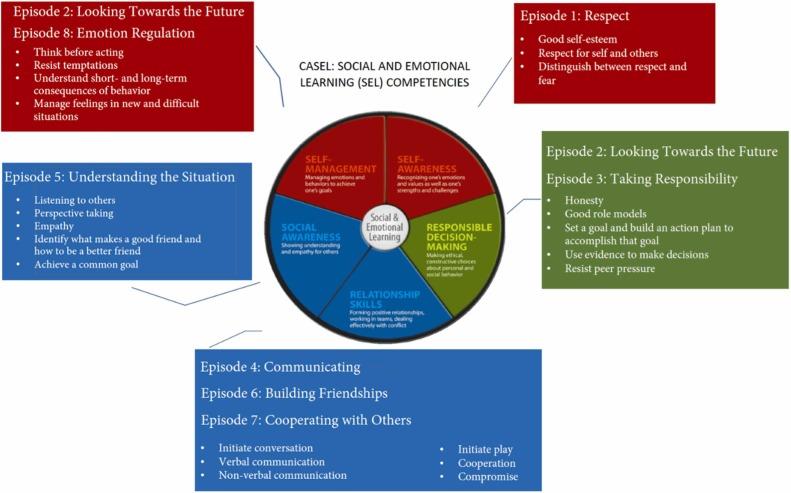The Future of SEL in Schools: Emerging Trends and Next steps for Effective Social-Emotional Learning
In today’s rapidly evolving educational landscape, social-emotional learning (SEL) has emerged as a key pillar of student success. As educators and policymakers reimagine the classroom for the 21st century, SEL programs are increasingly prioritized for equipping students with the skills necessary to navigate both academic and personal challenges.This article explores the future of SEL in schools, highlighting emerging trends, actionable steps for implementation, and the transformative impact of effective social-emotional learning.
What is Social-Emotional Learning (SEL)?
Social-emotional learning is the process through which children and adults acquire and effectively apply the knowledge, attitudes, and skills needed to understand and manage emotions, set positive goals, demonstrate empathy for others, establish positive relationships, and make responsible decisions. SEL is not just ”nice to have”—it’s essential for holistic student development and lifelong well-being.
The Benefits of SEL in Modern Education
- Academic Betterment: numerous studies show that students participating in SEL programs demonstrate improved academic performance.
- Enhanced Emotional Intelligence: SEL equips students with strategies to manage stress, overcome obstacles, and regulate their emotions.
- Better classroom Behavior: Schools observe declines in behavioral problems and suspension rates where SEL is effectively implemented.
- Long-term Success: SEL skills—like resilience, self-motivation, and empathy—are integral to success beyond school, positively impacting future relationships and workplaces.
Emerging Trends in SEL for Schools
as awareness of the importance of SEL grows, educational institutions are adapting innovative approaches. Here are the top emerging trends shaping the future of social-emotional learning in schools:
1. Integration of SEL and Core Academics
The most effective schools embed SEL principles across the curriculum rather than treating them as standalone lessons.This integrated approach ensures students consistently practise social-emotional skills, making them an inherent part of daily learning.
2. Technology-Driven SEL solutions
SEL technology tools—such as apps, digital platforms, and online assessments—are transforming delivery, allowing for personalized learning and real-time feedback. These tools help educators track student progress and tailor interventions to individual needs.
3. Focus on Equity and Inclusion
Modern SEL programs prioritize equity, ensuring that students from diverse backgrounds see their experiences reflected in the curriculum. Inclusive SEL addresses cultural competence and aims to dismantle systemic barriers in education.
4. Family and Community Engagement
The future of SEL extends beyond the classroom.Successful programs actively involve families and community partners, creating a cohesive support network for students and reinforcing SEL concepts at home and in extracurricular environments.
5. Explicit Adult SEL Initiatives
Teachers, counselors, and administrators with strong social-emotional competencies serve as powerful role models. Schools are investing more in adult SEL to foster healthy school climates and reduce educator burnout.
Next Steps for Effective Social-Emotional Learning Implementation
Implementing SEL programs is a journey—one that requires careful planning, community buy-in, and ongoing evaluation. Here are actionable steps schools can follow for successful SEL integration:
- Assess Current Needs: Use data-driven tools to evaluate existing SEL competencies and identify priority areas within your school community.
- Provide Professional Development: Offer ongoing SEL training for staff that focuses on instructional best practices, trauma-informed approaches, and self-care.
- Engage Stakeholders: Collaborate with students, families, and community organizations for well-rounded input in SEL program design and delivery.
- Integrate SEL into School Culture: Infuse SEL principles into school policies, classroom routines, and discipline practices to create a supportive learning environment.
- Monitor and evaluate: Use reliable assessments to track progress, measure outcomes, and adjust SEL strategies as needed.
Case Studies: SEL in Action
Urban elementary School Success
A large urban elementary school implemented a comprehensive SEL curriculum aligned with academic subjects. After two years, student suspension rates dropped by 35%, and math and reading scores improved significantly. teachers credited weekly SEL meetings and ongoing coaching as keys to sustaining momentum.
District-Wide Adult SEL Efforts
A mid-sized school district launched monthly workshops on adult SEL for educators, combining mindfulness practices and collaborative problem solving.Surveys revealed lower teacher stress levels and improved classroom climate, highlighting the ripple effect of supporting adult well-being.
Practical Tips for Schools Adopting SEL
- Add short mindfulness breaks or check-ins to daily routines.
- Establish “Emotion Corners” in classrooms where students can self-regulate.
- use literature and storytelling to spark discussions on empathy and perspective-taking.
- Celebrate SEL milestones and positive behaviors with recognition programs.
- Promote student voice in shaping school norms and SEL activities.
- Share resources and strategies with families through newsletters or workshops.
First-Hand Insights: Voices from the Classroom
“When we began embedding SEL into our curriculum, I noticed a profound shift in student engagement. They became more supportive of each other and took greater ownership of their learning. SEL isn’t just an ‘extra’—it’s what helps our students thrive.”
— Ms.Kim, 5th Grade Teacher, new York
“SEL gave me the tools to better handle stress and build positive relationships at school. I feel more confident and connected to my classmates.”
— Diego,8th Grade Student
Conclusion: preparing for the Future of SEL
The future of SEL in schools is shining—and vitally vital. As new challenges emerge and the needs of students evolve, social-emotional learning stands as a foundational element in creating resilient, compassionate, and successful young peopel. By staying current with SEL trends, investing in professional development, and fostering collaboration across the school community, educators can ensure every student receives the holistic education they deserve.
Investing in effective social-emotional learning is more than a passing trend—it’s an investment in the leaders, innovators, and community members of tomorrow. Now is the time for schools to prioritize SEL, embrace new approaches, and create supportive environments where every learner can thrive.

